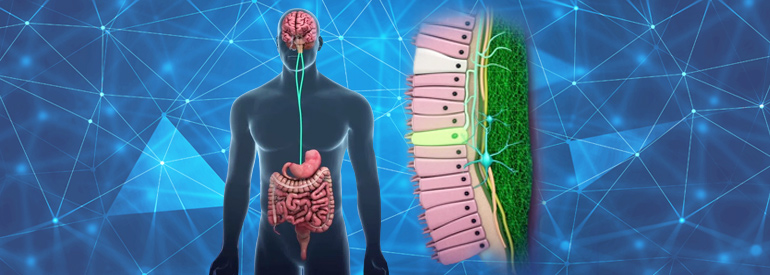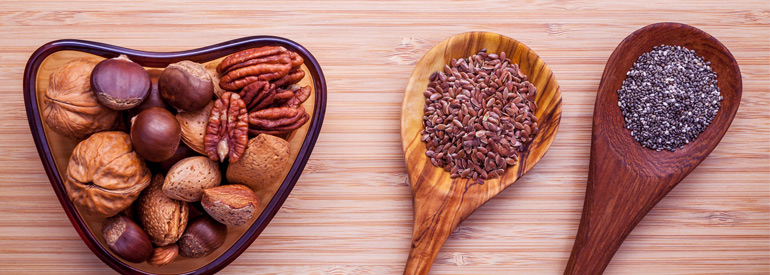
The Gut-Brain axis
A neural circuit that connect gut and brain
The theme of the bi-directional connection between brain and gut is increasingly involving the world of research and different medical disciplines even outside of neuroscience: neurology and psychiatry, endocrinology, gastroenterology to name a few.
Gut wall is formed by a layer of epithelial cells that separate the lumen from the underlying tissue. Within this layer there are electrically excitable cells called enteroendocrine cells, which perceive the introduction of ingested nutrients and microbial metabolites and activate an action potential. It is known that enteroendocrine cells act on the CNS indirectly through the paracrine action of hormones, such as cholecystokinin, which generates a satiety signal at the cortical level.
In particular, the circulating concentrations of cholecystokinin peak only a few minutes after food is ingested or after a meal is finished, despite its role in satiety. This discrepancy suggests that the brain perceives signals coming from the gut through an alternative, faster, neuronal signaling.
A new scientific study on Science suggests an additional way of communicating between gut and brain
In September 2018 the study “A gut-brain neural circuit for nutrient sensory transduction” was published on Science. The scientific investigation carried out, through the use of in-vitro and in-vivo models and very advanced methods (such as real-time single-cell PCR), has had satisfactory results on the identification of an intestinal sensory epithelial cell type that creates synapses with the afferent vagal endings. This receptor unit has been traced back to the enteroendocrine cell, but its ability to form a neuroepithelial circuit required a denomination: neuropod cell.
Through synapses with the vagus nerve, the neuropod cell connects the intestinal lumen to the brainstem and carries out its activity by translating sensory stimuli from sugars in milliseconds using glutamate as a neurotransmitter.
The neural circuit that is created gives the gut the rapidity to signal to the brain the “events of the day”, so that the latter can “give meaning” to what we eat.
For abstract >> http://science.sciencemag.org/content/361/6408/eaat5236
- On 8 March 2019






